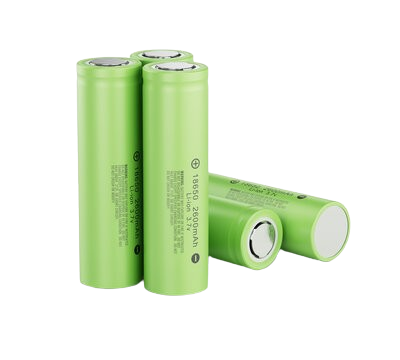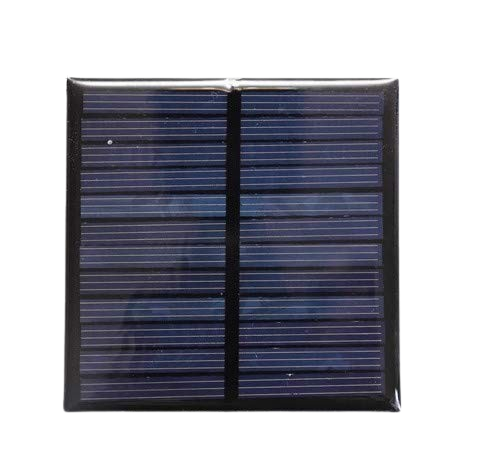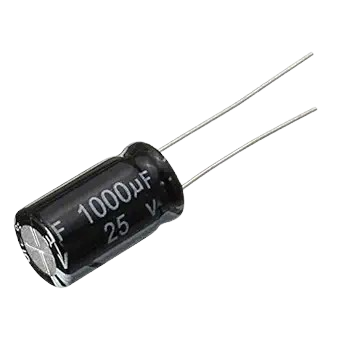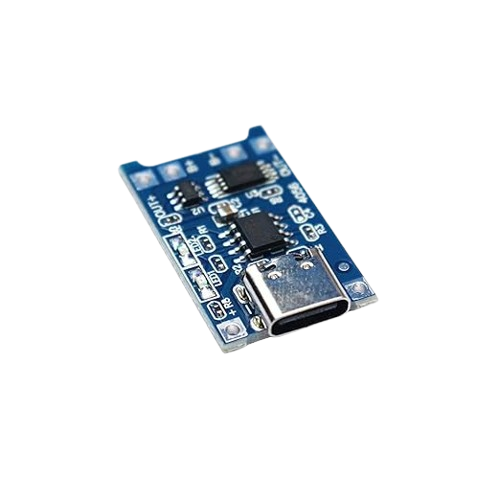Li-ion Batteries for IoT: Maximizing Performance, Longevity, and Efficiency

Overview
In the rapidly expanding world of the Internet of Things (IoT), where everything from smart home devices to industrial sensors demands reliable and efficient power, Lithium-ion (Li-ion) batteries have emerged as the undisputed champion. Their unparalleled energy density, long cycle life, and low self-discharge rate make them the ideal choice for keeping our connected devices running seamlessly.
But what exactly makes Li-ion batteries so crucial for IoT, and what should you know when integrating them into your next innovation? Let's dive deep into the technology that powers our smart future.Why Li-ion Batteries Are Essential for IoT
The unique demands of IoT devices—often requiring small form factors, long operational periods between charges, and consistent performance—align perfectly with the strengths of Li-ion technology:-
High Energy Density: Li-ion batteries can store a significant amount of energy in a small, lightweight package. This is critical for miniaturized IoT devices where space is at a premium.
-
Long Cycle Life: They can undergo hundreds, if not thousands, of charge and discharge cycles before their capacity significantly degrades. This translates to longer device lifespan and reduced maintenance.
-
Low Self-Discharge Rate: Unlike older battery chemistries, Li-ion batteries lose very little charge when not in use, meaning your IoT devices can remain dormant for extended periods without dying.
-
High Power Output: They can deliver bursts of power when needed, which is beneficial for devices that transmit data wirelessly or perform demanding tasks.
-
Wide Operating Temperature Range: While performance can vary at extremes, many Li-ion variants offer reliable operation across a practical range of temperatures found in typical IoT environments.
-
No Memory Effect: Unlike Nickel-Cadmium (Ni-Cd) batteries, Li-ion batteries do not suffer from the "memory effect," meaning you don't need to fully discharge them before recharging.
The Inner Workings: How Li-ion Batteries Function
At its core, a Li-ion battery operates through the movement of lithium ions between a positive electrode (cathode) and a negative electrode (anode) through an electrolyte.-
During Discharge (Powering your Device): Lithium ions move from the anode (typically graphite) through the electrolyte to the cathode (typically a lithium metal oxide). This movement creates a flow of electrons in the external circuit, generating electricity.
-
During Charge (Recharging): An external power source forces the lithium ions back from the cathode to the anode, storing energy in the battery.
Key Types of Li-ion Batteries for IoT Applications
While often referred to generically as "Li-ion," there are several distinct chemistries, each with its own advantages and disadvantages, making them suitable for different IoT applications:-
Lithium Cobalt Oxide (LCO - LiCoO2):
-
Pros: High energy density, commonly used in smartphones and laptops due to their small size and high capacity.
-
Cons: Lower thermal stability, moderate power capability, shorter lifespan compared to some other types.
-
IoT Use: Smaller, consumer-grade IoT devices where high energy density and compact size are paramount, like wearables or smart sensors with limited space.
-
-
Lithium Manganese Oxide (LMO - LiMn2O4):
-
Pros: Good thermal stability, safer, faster charging and discharging capabilities.
-
Cons: Lower energy density than LCO, shorter lifespan than NMC.
-
IoT Use: Power tools, medical devices, or IoT applications requiring higher power pulses and improved safety over LCO.
-
-
Lithium Nickel Manganese Cobalt Oxide (NMC - LiNiMnCoO2):
-
Pros: A balanced hybrid offering good energy density, reasonable power, and decent cycle life. Excellent all-rounder.
-
Cons: Can be more expensive due to nickel and cobalt content.
-
IoT Use: Widely adopted in electric vehicles and a strong contender for many IoT applications, especially those needing a balance of performance and longevity, like smart meters or asset trackers.
-
-
Lithium Iron Phosphate (LFP - LiFePO4):
-
Pros: Exceptionally long cycle life (often thousands of cycles), excellent thermal stability and safety, high power output.
-
Cons: Lower energy density (larger size for the same capacity), lower nominal voltage.
-
IoT Use: Ideal for industrial IoT, solar-powered devices, backup power systems, or applications where extreme longevity, safety, and robustness are critical, even if it means a slightly larger footprint.
-
-
Lithium Nickel Cobalt Aluminum Oxide (NCA - LiNiCoAlO2):
-
Pros: Very high energy density and good power, often used in high-performance applications.
-
Cons: Less safe and higher cost than NMC, moderate lifespan.
-
IoT Use: Niche, high-performance IoT applications where maximum energy density is critical, and safety protocols can be rigorously implemented.
-
Example: Choosing the Right Li-ion for a Smart Agriculture Sensor
Let's consider an IoT smart agriculture sensor designed to monitor soil moisture, temperature, and nutrient levels in a remote field. This sensor needs to transmit data wirelessly to a central hub once an hour and operate autonomously for months without human intervention.
-
Requirements:
-
Long operational life: The battery should last at least 6-12 months on a single charge.
-
Reliability in varying temperatures: The field experiences temperature fluctuations.
-
Low power consumption most of the time, with bursts for data transmission.
-
Robustness: Needs to withstand outdoor conditions.
-
Moderate energy density: Space is not extremely limited, but compact is better.
-
-
Battery Type Consideration:
-
LCO: Might provide enough energy density for a small device, but its shorter cycle life and potentially lower thermal stability make it less ideal for long-term outdoor deployment.
-
LFP: Offers excellent cycle life and safety, and good temperature performance. While its energy density is lower, the robust nature and long life are highly beneficial for remote agriculture. The slightly larger size for the same capacity is often acceptable for such applications.
-
NMC: A strong contender, offering a good balance of energy density, cycle life, and thermal stability. It could certainly work well.
-
-
Recommended Choice: Lithium Iron Phosphate (LFP) For this smart agriculture sensor, LFP would likely be the most suitable choice. Its exceptional cycle life means it can be recharged many times over its lifespan, providing years of service. Its superior thermal stability and inherent safety are crucial for an outdoor device exposed to the elements. While it might be slightly larger than an NMC battery of the same capacity, the trade-off for longevity and robustness is well worth it in this critical application, minimizing maintenance trips to the field.
Optimizing Li-ion Battery Performance in IoT
To truly maximize the benefits of Li-ion batteries in your IoT devices, consider these best practices:-
Proper Sizing: Accurately calculate your device's power consumption (average and peak) to select a battery with adequate capacity, avoiding unnecessary over-sizing or critical under-sizing.
-
Battery Management System (BMS): A robust BMS is crucial for monitoring voltage, current, temperature, and state of charge. It protects the battery from overcharging, over-discharging, short circuits, and extreme temperatures, significantly extending its life and ensuring safety.
-
Temperature Management: Operating within the recommended temperature range (both for charging and discharging) is vital for battery health. Extreme cold or heat can degrade performance and lifespan.
-
Optimal Charging Practices: Avoid frequent deep discharges and full charges. Partial charges are often better for extending battery life.
-
Firmware Optimization: Optimize device firmware to minimize power consumption by utilizing deep sleep modes, efficient data transmission protocols, and power-saving components.
Types of Li-ion Batteries
Here are some popular types of Lithium-ion batteries used in various applications:| Type | Chemical Name | Features | Common Usage |
|---|---|---|---|
| LiCoO₂ (LCO) | Lithium Cobalt Oxide | High energy, low safety | Smartphones, Cameras |
| LiMn₂O₄ (LMO) | Lithium Manganese Oxide | High thermal stability | Power tools, Medical |
| LiFePO₄ (LFP) | Lithium Iron Phosphate | Very safe, long cycle life | Solar, EVs, UPS |
| LiNiMnCoO₂ (NMC) | Lithium Nickel Manganese Cobalt Oxide | Balanced performance | E-bikes, EVs |
| LiNiCoAlO₂ (NCA) | Lithium Nickel Cobalt Aluminum Oxide | High energy & power | Tesla cars |
| LTO | Lithium Titanate | Ultra-fast charge, low energy density | EV fast-charging stations |
What is 18650 Li-ion Battery?
The 18650 is a standard size of cylindrical lithium-ion battery, typically having:
-
Voltage: 3.7V nominal
-
Capacity: 1500 mAh to 3500 mAh
-
Size: 18mm diameter, 65mm length
-
Recharge Cycle: 500–1000 times
- Flashlights
- Power banks
- DIY electronics
- IoT devices
- Drones & RC Toys
Safety Tips for Using Li-ion Batteries
To use Li-ion batteries safely:- Never puncture or crush the battery
-
Use a proper BMS (Battery Management System)
- Avoid overcharging or deep discharging
- Store in cool, dry place
- Use a fireproof Li-ion bag for storage/transport
- Monitor temperature while charging
Where to Buy
Prices may vary. Click on "Buy Now" to check current availability and pricing.
Administrator
Frequently Asked Questions
Common questions about Li-ion Batteries for IoT: Maximizing Performance, Longevity, and Efficiency. Find answers to the most frequently asked questions.
User Reviews & Comments
Share your experience with this IoT Blog. Your feedback helps our community make informed decisions!
Share Your Experience
Help others by sharing your thoughts about this IoT Blog.
Related Blogs
Explore more IoT Blogs in the same category

Solar Panel: Types, Benefits, Installation Cost, and Maintenance Guide for Home & Commercial Use (2025)
Power Supply
Discover everything about solar panels in this complete guide covering types, benefits, installation cost, and maintenance tips. Whether you're planning for home or commercial use, learn how solar energy can reduce your electricity bills and promote sustainability. Ideal for beginners and property owners exploring solar power solutions in 2025.

Capacitors: Types, Working, Applications, Selection Guide & Complete Technical Overview
Power Supply
Discover everything about capacitors in this complete technical guide. Learn capacitor types, working principles, real-world applications, and how to choose the right one for your circuit. Ideal for students, engineers, and electronics enthusiasts seeking reliable, accurate information

TP4056 Battery Charging Module: Working, Features, Pinout & Safe Usage Guide
Power Supply
TP4056 is a compact lithium-ion battery charging module known for its simplicity, safety, and efficient performance. This guide covers its working, features, pin configuration, and safety usage tips, making it ideal for electronics enthusiasts and DIY battery charger projects. Learn how to use TP4056 effectively without overcharging or damaging your batteries.
No Reviews Yet
Be the first to share your experience with this IoT Blog!